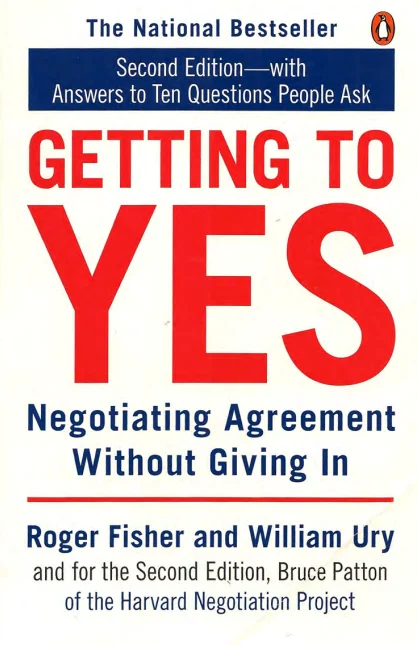
Most negotiations end in compromise—but not necessarily in success. Getting to Yes offers a smarter way to negotiate: focus on interests, not positions; work together creatively; and use objective standards to guide decisions. This proven method helps you achieve better outcomes without sacrificing your integrity or relationships.
Audio Note Option Comming Soon...
Getting to Yes: Negotiating Agreement Without Giving In is a groundbreaking book on negotiation that introduces a revolutionary method called principled negotiation , developed by the Harvard Negotiation Project. Written by Roger Fisher and William Ury—with later contributions from Bruce Patton—the book provides a practical framework for resolving conflicts and reaching agreements without compromising your values or giving in to pressure.
The authors argue that traditional “positional bargaining”—where each side takes a firm stance and tries to win through threats, persuasion, or concessions—often leads to inefficient, unsatisfying results. Instead, they propose a more effective and ethical approach based on four core principles:
A major strength of the book is its emphasis on negotiating rationally even when the other side behaves emotionally or aggressively . The authors offer strategies for dealing with difficult tactics such as hardball negotiating, deception, or refusal to cooperate.
One of the most useful concepts introduced is the idea of a BATNA (Best Alternative to a Negotiated Agreement ). Knowing your BATNA gives you clarity about when to walk away and helps you negotiate from a position of strength rather than desperation.
Throughout the book, real-life examples illustrate how principled negotiation works across diverse contexts—from international diplomacy and business deals to personal disputes and workplace conflicts.
Getting to Yes is especially valuable for professionals in law, business, management, government, education, and anyone who wants to improve their ability to resolve disagreements constructively. It’s widely used in negotiation training programs and taught in law and business schools around the world.
This book doesn’t just teach you how to get what you want—it teaches you how to build better relationships, foster cooperation, and achieve durable agreements in any situation.